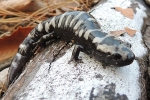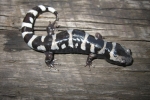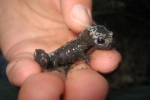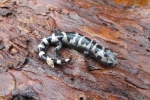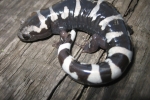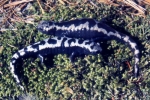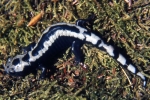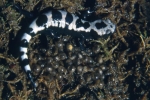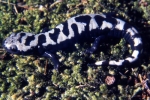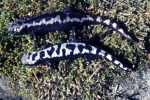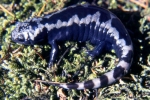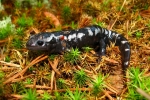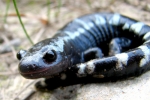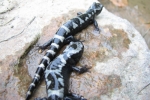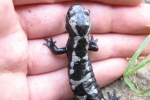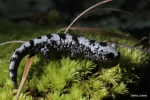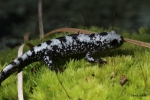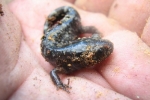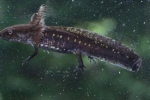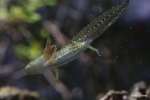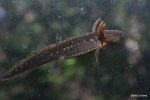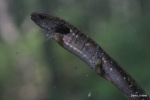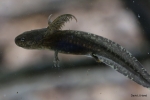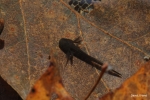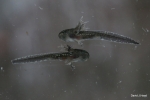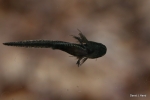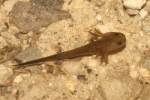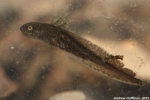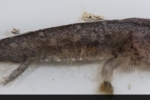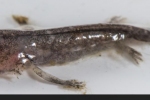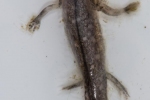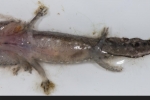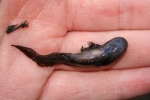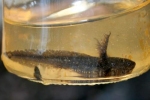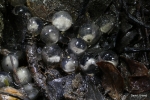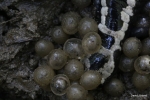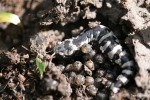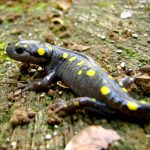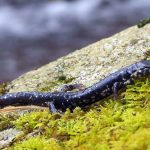Marbled Salamander
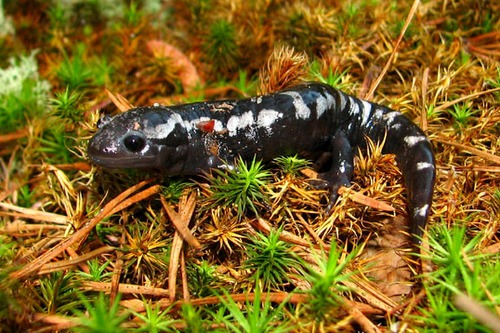
Scientific Name: Ambystoma opacum
Size: 4-5 inches (10-12.7 cm) in length
Status: Species of special concern
Habitat:
Upland forest and swampy forest with temporary ponds.
Description:
Small, stout bodied species. The background color is rich black and becomes a light bluish black on the lower sides. The upper body pattern is made up of white to light grey crossbands that run across the head, body and tail. The bands often run together or are interrupted and broadest on the sides of the body. The pattern stops midway down the sides of the body. The underside is black to bluish-black. The head is bordered dorsally by silver to white markings with a black oval or “V" shaped spot in the center.
- he dorsal background color is rich black and becomes a light bluish black on the lower sides. The dorsal pattern is made up of white to light grey crossbands that run across the head, body and tail. The bands often run together or are interrupted and broadest on the sides of the body. The pattern stops midway down the sides of the body.
- The ventral is black to bluish-black.
- The head is bordered dorsally by silver to white markings with a black oval or “V” shaped spot in the center.
- Small, stout bodied species
- The head is broad and rounded, and not distinct from the body.
- The limbs are short and thick.
- The tail is short.
- 11-12 costal grooves.
- Juveniles begin to develop there adult pattern with in 1-2 months after transformation.
- Recently morphed individuals; The dorsal background color is brown to black and lighter ventrally. The dorsal is covered with scattered light spots and a series of light dorsolateral spots that run along the length of the body. The spots become more noticeable and form lichenlike patterns with in 1-3 weeks.
- Are pond-type with bushy gills.
- The body color is black and drab.
- The dorsal fins that extend almost to the front limbs.
- The dorsal background is brownish olive to black with a series of light dorsolateral spots that run along the length of the body.
- The ventral surfaces are mottled brownish beige.
- Pond-type with short heads and triangular bodies.
- The dorsal caudal fin is well-developed and extends forward to the middle of the back.
- Older larvae may have mottling on the body and have a light yellowish green coloration.
- The throat is uniformly stippled with dark pigment.


References:
- Hulse, C. and McCoy C. J. and Ellen Censky ,1998. Amphibians and Reptiles of Pennsylvania and the Northeast. 59-63pp.
- Petranka, James W. ,1998. Salamanders of the United States and Canada. 88-96pp.
- Tom Diez
- Bob Hamilton
- Dave Emma
- Jason Poston
- Andrew Hoffman
- Sebastian Harris
- Chris Bortz
- David J. Hand
- Don Becker (psychoticnature.com)
Heads up!
Please contribute your observation of this and other herps to the Pennsylvania Amphibian and Reptile Survey. Your help is needed.
